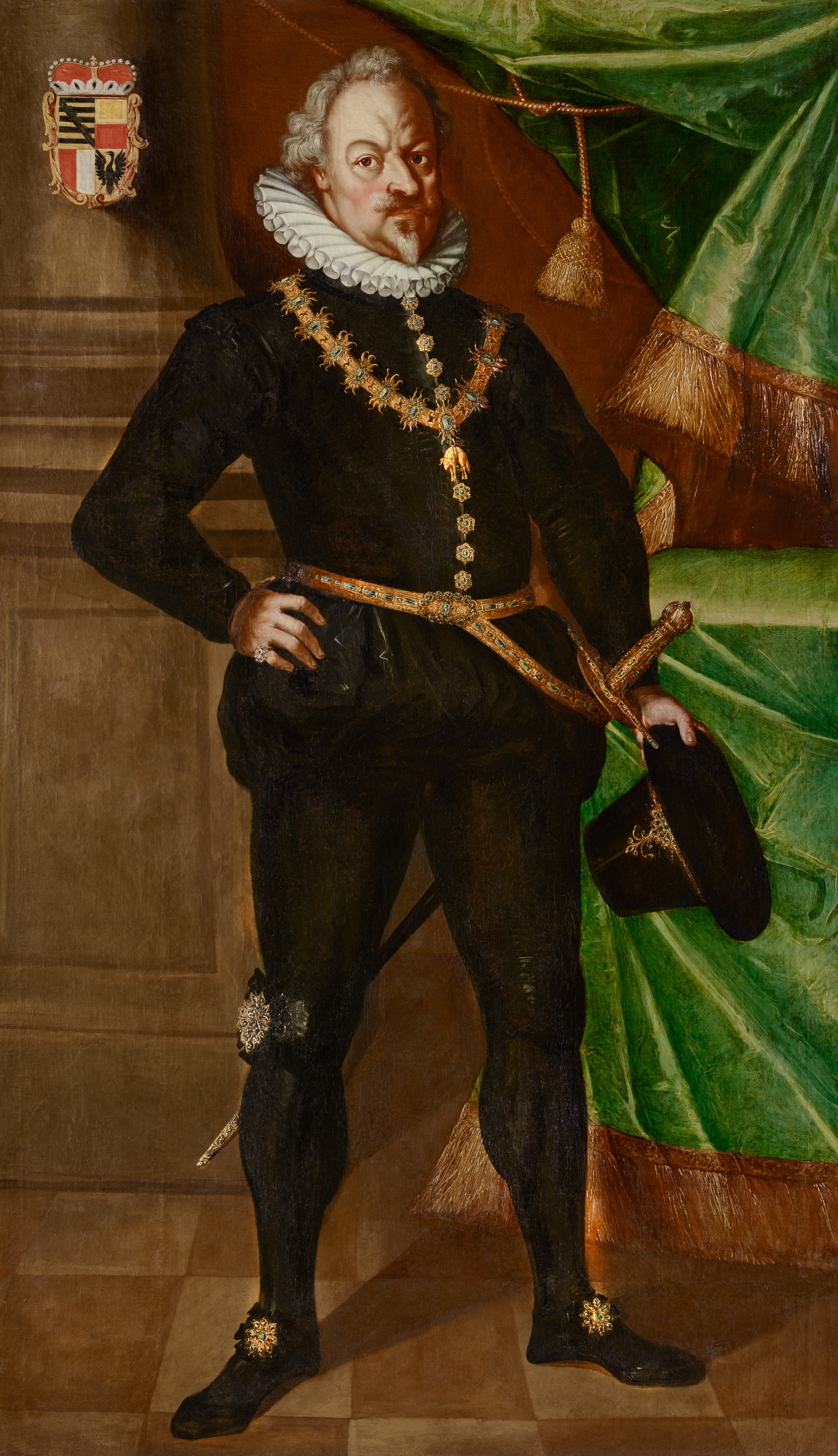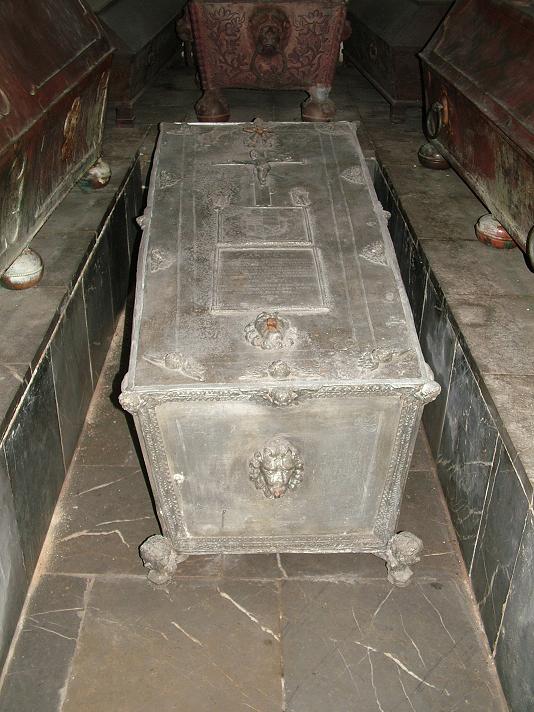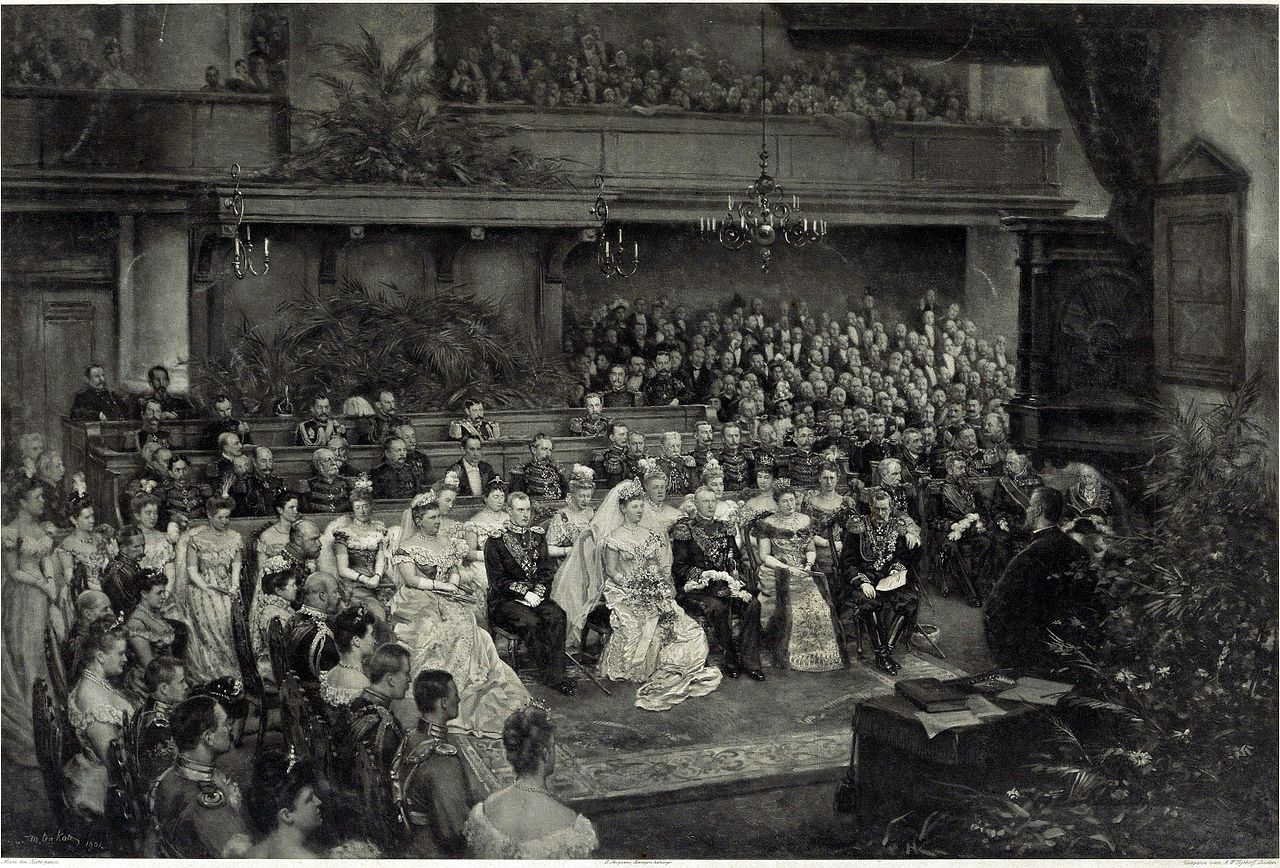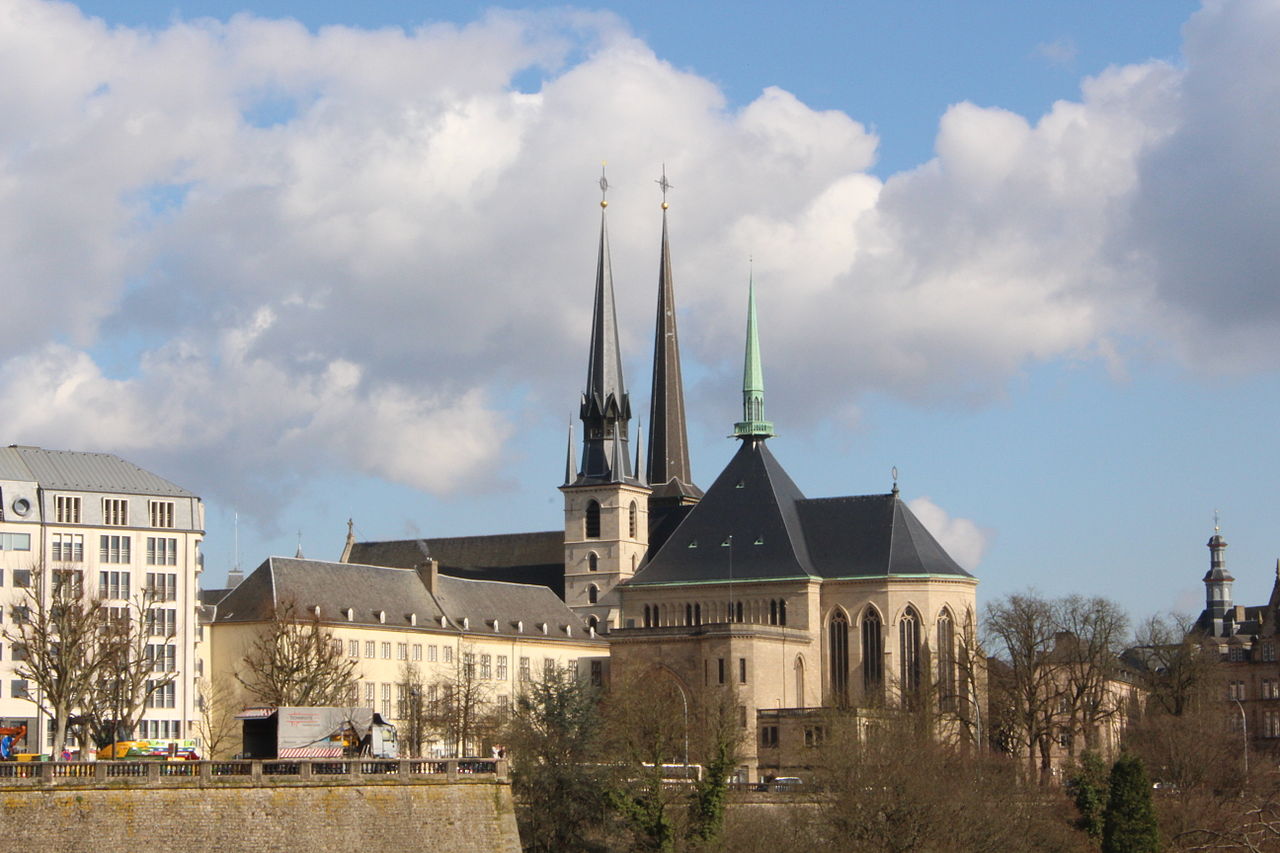by Susan Flantzer
© Unofficial Royalty 2021

The Nieuwe Kerk in Delft; Credit – Door Natuur12 – Eigen werk, CC BY-SA 3.0, https://commons.wikimedia.org/w/index.php?curid=28304742
Since the establishment of the Kingdom of the Netherlands in 1815, all Dutch monarchs and consorts have been buried at the Nieuwe Kerk (The New Church) in Delft, located in South Holland (Zuid-Holland), the Netherlands. In addition to the monarchs of the Netherlands and their consorts, most Princes of Orange after Willem I (the Silent) and their consorts were also buried at the Nieuwe Kerk in Delft.
The Nieuwe Kerk in Delft was built in the 14th and 15th centuries and was originally a Roman Catholic Church dedicated to the Virgin Mary and Saint Ursula of Cologne. In 1572, during the Reformation, the Nieuwe Kerk in Delft was taken over by the Dutch Reformed Church. Today the Dutch royal family are members of the Protestant Church in the Netherlands. It was formed in 2004 by the merger of the Dutch Reformed Church, the Reformed Churches in the Netherlands and the Evangelical Lutheran Church in the Netherlands. While the Nieuwe Kerk in Delft is open for visitors, the royal burial vaults of the House of Orange-Nassau are private and not open to the public and there are no photos of the tombs. The church has services every Sunday for members of the Protestant Church of the Netherlands in Delft.

The Nieuwe Kerk in Delft circa 1742 – 1801; Credit – Wikipedia
This church was the second church in Delft after the Oude Kerk (Old Church) and was therefore called the Nieuwe Kerk (New Church). The first Nieuwe Kerk was a temporary wooden church, constructed from 1381 – 1382 and consecrated on July 6, 1382. Two years later, the construction of a Gothic stone basilica around the wooden church started. On August 11, 1384, the foundation stone for the choir of the basilica was laid on the east side of the wooden church. After the completion of the interior, the wooden church was dismantled. The foundation stone of the tower was laid on September 6, 1396, by four city councilors of the city. On September 6, 1496, exactly 100 years after the start of construction, the tower was finished.
On May 3, 1536, a fire in Delft, probably caused by a lightning strike to the Nieuwe Kerk tower, caused hundreds of buildings to burn including the entire city archives resulting in the loss of recorded information from before 1536. The tower of the church was rebuilt.

View of Delft after the 1654 Delft Thunderclap by Egbert van der Poel, The Nieuwe Kerk can be seen on the left; Credit – Wikipedia
On October 12, 1654, the Delft Thunderclap (link in German) disaster took place. A gunpowder storage facility located in the northeast center of Delft exploded. The exact number of people who died in the disaster has never been established. Nearly every building in the city center was damaged and buildings further away, such as the Nieuwe Kerk, also suffered damage. All the stained glass windows in the Nieuwe Kerk were blown out. In 1872, the Nieuwe Kerk tower was damaged again after a lightning strike. The Dutch architect Pierre Cuypers designed a new tower using the strong Bentheimer sandstone.
********************
Burial Church of the Dutch Royal Family

A drawing made by a French journalist who entered the crypts in 1890 just before King Willem III was interred; Credit – Wikipedia
In 1584, Willem I (the Silent) Prince of Orange was assassinated at the Prinsenhof in Delft. He had planned to be buried at the Grote Kerk (Great Church) in Breda, where members of the Nassau-Dillenburg family, ancestors to the Dutch Royal Family, the House of Orange-Nassau, were traditionally buried, but Breda was under Spanish control. Instead, his remains were placed in a cloth-covered coffin in the choir of the Nieuwe Kerk in Delft.
It was not until 1609 that the States-General decided to build a tomb for Willem the Silent, considered the Vader des Vaderlands (Father of the Fatherland). Willem is the founder of the House of Orange-Nassau, the ancestor of the Dutch monarchs, the ancestor of British monarchs from King George I forward, and the ancestor of other European royal families. However, work on the tomb never began and in 1614, Willem the Silent’s fourth wife and widow Louise de Coligny insisted that a suitable tomb be built.

Tomb of Willem the Silent; Photo Credit – Door Zairon – Eigen werk, CC BY-SA 4.0, https://commons.wikimedia.org/w/index.php?curid=56280054
Hendrick de Keyser, a Dutch sculptor and architect, was commissioned to build the tomb. After his death, his son Pieter de Keyser, also a sculptor and an architect, completed the tomb in 1623. A crypt was constructed under the tomb with an entrance behind the tomb. The remains of Willem I (the Silent) were moved to the crypt at an unknown date. The crypt is sealed by a large stone cover with four brass rings commissioned by Queen Wilhelmina in 1925. On the stone cover is this inscription in Latin: “Here Willem I, the Father of the Fatherland, expects the resurrection.” The crypt became the burial site for subsequent Princes of Orange and their families and later for the monarchs of the Kingdom of the Netherlands and their families. The original crypt, called the Old Crypt, was expanded in 1625 and 1752. In 1822, an additional crypt called the New Crypt was constructed.

The access to the royal crypt in the foreground and the cenotaph for William the Silent in the background and ; Credit – By Sander van der Wel from Netherlands – Royal grave tomb and the grave of Willem van Oranje, CC BY-SA 2.0, https://commons.wikimedia.org/w/index.php?curid=28146859
Members of the House of Orange-Nassau visited and probably still visit the crypts but they have never been open to the public out of respect for the privacy of the royal family and because they are not suitable for public visits. The mayor of Delft is the commissioner of the royal vaults. He inspects the crypts once a year and ensures that the royal family can always visit them. The mayor opens the crypts in the presence of two members of the Dutch security service and two military police. Only sworn personnel may carry out work in the crypts. The large stone cover is only removed for burials of members of the Dutch royal family. For all other purposes, a small service entrance next to Willem the Silent’s tomb is used.
The only information about what the crypts look like comes from two drawings. In 1890, a drawing was made by a French journalist who entered the crypts just before King Willem III was interred. In the same year, Victor Eugène Louis de Stuers, a Dutch art historian, lawyer, civil servant, and politician, made a pencil drawing of the Old Crypt.

Victor Eugène Louis de Stuers’ drawing of the Old Crypt with the body-like lead sarcophagus of Louise de Coligny on the bottom right and Willem I, Prince of Orange’s coffin on the bottom left; Credit – Wikipedia
On April 20, 2021, it was announced that the royal vault in the Nieuwe Kerk in Delft would be refurbished and expanded. From Royal House of the Netherlands: Expansion crypt Nieuwe Kerk Delft: “With the burials of Prince Claus (2002) and Princess Juliana and Prince Bernhard (2004), the maximum capacity of the burial vault of the Nieuwe Kerk in Delft has almost been reached. The expansion of the royal vault means that a new cellar will be built in the south ambulatory of the church. The crypt will be connected to the existing vestibule (dating from 1925) of the current royal crypt. In addition, the crypt will have a new secondary entrance on the outside of the church, creating direct access to the crypt. In the extension of the burial vault, space will be created for more than twenty burials.”
In the diagram below, the Old Crypt is labeled with the years 1623, 1625, and 1752. The New Crypt is labeled with the year 1822 and the newest crypt is labeled with the year 2022. The area labeled with the year 1925 is a vestibule.

Floor plan of the current royal burial vault in the Nieuwe Kerk in Delft, along with the new expansion of the burial vault to be built in 2022; Credit – Royal House of the Netherlands: Expansion crypt Nieuwe Kerk
********************
Burials at the Nieuwe Kerk, Delft

Queen Juliana and her husband Prince Bernhard and other members of the Dutch royal family watch as Queen Wilhelmina’s coffin is taken to the royal crypts in 1962; Credit – Wikipedia
Most funerals of those buried at the Nieuwe Kerk in Delft had funerals at the church.
Buried in the Old Crypt:
- Willem I, Prince of Orange (Willem the Silent) (1533 – 1584)
- Louise de Coligny, fourth wife of Willem I, Prince of Orange (1555 – 1620)
- Maurits, Prince of Orange (1567 – 1625)
- Princess Henriëtte Amalia, daughter of Frederik Hendrik, Prince of Orange (born and died 1628)
- Princess Elisabeth of Orange-Nassau, daughter of Frederik Hendrik, Prince of Orange born and died 1630)
- Prince Hendrik Lodewijk, son of Frederik Hendrik, Prince of Orange (born and died 1639)
- Frederik Hendrik, Prince of Orange (1584 – 1647)
- Princess Isabella Charlotte of Orange-Nassau, daughter of Frederik Hendrik, Prince of Orange (1632 – 1642)
- Princess Catharina Belgica of Orange-Nassau, daughter of Willem I, Prince of Orange, wife of the Count of Hanau-Münzenberg (1578 – 1648)
- Amalia of Solms-Braunfels, wife of Frederik Hendrik,Prince of Orange (1602 – 1675)
Buried in the New Crypt:
- Willem II, Prince of Orange (1626 – 1651)
- Stillborn daughter of Willem IV, Prince of Orange (1736)
- Willem IV, Prince of Orange (1711 – 1751)
- Anne, Princess Royal, wife of Willem IV, Prince of Orange (1709 – 1759
- Prince Georg Wilhelm of Nassau-Weilburg, son of Prince Carl Christian of Nassau-Weilburg and grandson of Willem IV, Prince of Orange (1760 – 1762)
- Stillborn daughter of Prince Carl Christian of Nassau-Weilburg (1767)
- Unnamed son of Willem V, Prince of Orange (born and died 1769)
- Prince Frederik of Orange-Nassau, son of Willem V, Prince of Orange (1774 – 1799)
- Princess Pauline of Orange-Nassau, daughter of King Willem I of the Netherlands (1800 – 1806)
- William V, Prince of Orange (1748 – 1806)
- Princess Louise of Orange-Nassau, daughter of Willem V, Prince of Orange and wife of Hereditary Prince Karl of Brunswick-Wolfenbüttel (1770 – 1819)
- Wilhelmina of Prussia, wife of Willem V, Prince of Orange (1751-1820)
- Prince Ernst Casimir of the Netherlands, son of King Willem II of the Netherlands (born and died 1822)
- Prince Willem of the Netherlands, son of Prince Frederik of the Netherlands, grandson of King Willem I of the Netherlands (1833 – 1834)
- Wilhelmine of Prussia, wife of King Willem I of the Netherlands (1774 – 1837)
- King Willem I of the Netherlands (1772 – 1843)
- Prince Frederik of the Netherlands, son of Prince Frederik of the Netherlands, grandson of King Willem I of the Netherlands (1836 – 1846)
- Prince Alexander of the Netherlands, son of King Willem II of the Netherlands (1818 – 1848)
- King Willem II of the Netherlands (1792 – 1849)
- Prince Maurits of the Netherlands, son of King Willem III of the Netherlands (1843 – 1850)
- Anna Pavlovna of Russia, wife of King William II of the Netherlands (1795 – 1865)
- Louise of Prussia, wife of Prince Frederik of the Netherlands, son of King Willem I of the Netherlands (1808 – 1870)
- Amalia of Saxe-Weimar-Eisenach, wife of Prince Hendrik of the Netherlands, son of King Willem II of the Netherlands (1830 – 1872)
- Sophie of Württemberg, first wife of King Willem III of the Netherlands (1818 – 1877)
- Prince Hendrik of the Netherlands, son of King Willem II of the Netherlands (1820 – 1879)
- Prince Willem of the Netherlands, son of King Willem III of the Netherlands (1840 – 1879)
- Prince Frederik of the Netherlands, son of King Willem I of the Netherlands (1797 – 1881)
- Prince Alexander of the Netherlands, son of King Willem III of the Netherlands (1851 – 1884)
- King Willem III of the Netherlands (1817 – 1890)
- Emma of Waldeck-Pyrmont, second wife of King Willem III of the Netherlands (1858 – 1934)
- Heinrich of Mecklenburg-Schwerin, Prince Hendrik of the Netherlands, husband of Queen Wilhelmina (1876 – 1934)
- Queen Wilhelmina of the Netherlands (1880 – 1962)
- Claus von Amberg, Prince Claus of the Netherlands, husband of Queen Beatrix of the Netherlands (1926 – 2002)
- Queen Juliana of the Netherlands (1909 – 2004)
- Bernhard of Lippe-Biesterfeld, Prince Bernhard of the Netherlands, husband of Queen Juliana of the Netherlands (1911 – 2004)
This article is the intellectual property of Unofficial Royalty and is NOT TO BE COPIED, EDITED, OR POSTED IN ANY FORM ON ANOTHER WEBSITE under any circumstances. It is permissible to use a link that directs to Unofficial Royalty.
Works Cited
- An Ard Rí and Flantzer, Susan, 2012. Dutch Royal Burial Sites. [online] Unofficial Royalty. Available at: <https://www.unofficialroyalty.com/nieuwe-kerk-new-church-in-delft-the-netherlands/> [Accessed 4 October 2021].
- De.wikipedia.org. 2021. Nieuwe Kerk (Delft) – Wikipedia. [online] Available at: <https://de.wikipedia.org/wiki/Nieuwe_Kerk_(Delft)> [Accessed 4 October 2021].
- En.wikipedia.org. 2021. Nieuwe Kerk (Delft) – Wikipedia. [online] Available at: <https://en.wikipedia.org/wiki/Nieuwe_Kerk_(Delft)> [Accessed 4 October 2021].
- Koninklijkhuis.nl. 2021. Uitbreiding grafkelder Nieuwe Kerk Delft. [online] Available at: <https://www.koninklijkhuis.nl/onderwerpen/overlijden/nieuwe-kerk-delft/uitbreiding-grafkelder> [Accessed 4 October 2021].
- Nl.wikipedia.org. 2021. Delftse donderslag – Wikipedia. [online] Available at: <https://nl.wikipedia.org/wiki/Delftse_donderslag> [Accessed 4 October 2021].
- Nl.wikipedia.org. 2021. Grafkelder van Oranje-Nassau – Wikipedia. [online] Available at: <https://nl.wikipedia.org/wiki/Grafkelder_van_Oranje-Nassau> [Accessed 4 October 2021].
- Nl.wikipedia.org. 2021. Nieuwe Kerk (Delft) – Wikipedia. [online] Available at: <https://nl.wikipedia.org/wiki/Nieuwe_Kerk_(Delft)> [Accessed 4 October 2021].
- Oude en Nieuwe Kerk Delft. 2021. Royal crypts. [online] Available at: <https://oudeennieuwekerkdelft.nl/en/new-church/royal-family/royal-crypts> [Accessed 4 October 2021].






 September 21, 1815 – Inauguration of King Willem I; Credit – Wikipedia
September 21, 1815 – Inauguration of King Willem I; Credit – Wikipedia November 28, 1840 – Inauguration of King Willem II; Credit – Wikipedia
November 28, 1840 – Inauguration of King Willem II; Credit – Wikipedia May 12, 1849 – Inauguration of King Willem III; Credit – Wikipedia
May 12, 1849 – Inauguration of King Willem III; Credit – Wikipedia September 6, 1891 – Inauguration of Queen Wilhelmina; Credit – Wikipedia
September 6, 1891 – Inauguration of Queen Wilhelmina; Credit – Wikipedia September 6, 1948 – Inauguration of Queen Juliana; Credit – Wikipedia
September 6, 1948 – Inauguration of Queen Juliana; Credit – Wikipedia April 30, 1980 – Inauguration of Queen Beatrix; Credit – Wikipedia
April 30, 1980 – Inauguration of Queen Beatrix; Credit – Wikipedia April 30, 2013 – Inauguration of King Willem-Alexander; Credit – Wikipedia
April 30, 2013 – Inauguration of King Willem-Alexander; Credit – Wikipedia





































